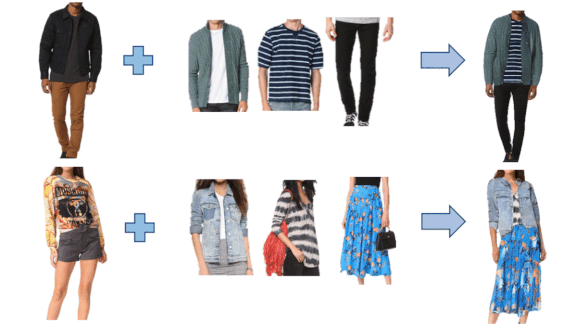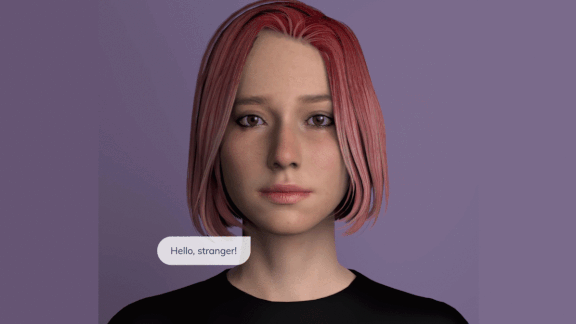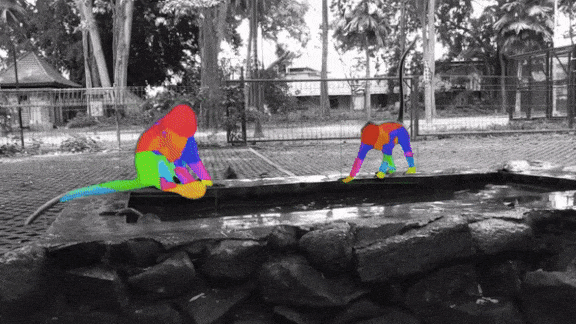Dear friends,
We know that biased data leads to biased machine learning. But does the problem go beyond that? A few colleagues asked about this after a heated exchange on Twitter between Yann LeCun and Timnit Gebru (see “Image Resolution in Black and White” below).
There are plenty of documented examples of biased data contributing to bad outcomes. But suppose we find purely unbiased data and build an AI system that helps lenders optimize interest rates for payday loans. We’re careful to make sure the data, algorithms, and learned models don’t discriminate unfairly against any disadvantaged or minority group. Our results are unbiased and in the clear, right?
Unfortunately, no. Payday loans are quick-turnaround loans often with very high interest rates — in California, a lender can charge 459 percent interest on a $100, 14-day loan. They target low income individuals. In the U.S., they’re used disproportionately by the Black community. Thus even a fair algorithm will hurt this community especially.

Beyond biased data, the way we frame problems, choose what to build, and choose where to deploy can add to or subtract from problems of bias and privilege. An “unbiased” AI technology operating in an unfair social system can contribute to biased outcomes.
We still have a lot of work ahead to address harmful biases throughout society. Twenty years ago, the AI community was a small group working on an exciting but obscure technology. Today our community is large, worldwide, and rapidly growing, and we contribute to applications at the center of daily life. We have a greater responsibility than ever to educate ourselves not only in the technology but also in its social context.
It’s not always easy to foresee the indirect impact of our work. Who would have guessed that a poorly designed software implementation to enable freedom of speech would lead to toxic communications on social media? But with a broader perspective, I hope our community can better understand the impact of our work and make better decisions about how to help society move forward with greater fairness and less bias.
Keep learning!
Andrew
News

Image Resolution in Black and White
A new model designed to sharpen images tends to turn some dark faces white, igniting fresh furor over bias in machine learning.
What’s new: Built by researchers at Duke University, Photo Upsampling via Latent Space Exploration (Pulse) generates high-resolution versions of low-resolution images. It sparked controversy when it transformed a pixelated portrait of Barack Obama into a detailed picture of a white man.
How it works: Most upsampling models are trained to generate high-res output from low-res input. Pulse creates a series of high-res images progressively optimized to match the low-res source.
- Pulse uses StyleGAN, a pre-trained generative adversarial network, to generate a new image from the original and an input vector.
- The system downsamples the generated image to the original’s resolution. Then it compares the two.
- It modifies the input vector based on the differences and repeats the process 100 times to arrive at its final output.
- Human judges scored Pulse’s output more realistic than that of four competing models. The computer-based assessment Natural Image Quality Evaluator (NIQE) rated Pulse’s images higher than those in a database of high-res celebrity portraits.
The controversy: Twitter user Chicken3gg revealed Pulse’s bias using a downsampled photo of the former U.S. president. That prompted machine learning engineer Robert Osazuwa Ness to try it on blurred images of U.S. Senator Kamala Harris, actress Lucy Liu, and other nonwhite individuals. The system whitewashed them, too, and also interpreted some female faces as male.
- The incident triggered an online debate that drew in major figures in the AI community.
- Pulse’s authors blamed racially imbalanced training data. When they trained their system on a more diverse dataset, its accuracy with respect to race ranged from 79 percent to 90 percent.
- Facebook’s AI chief Yann LeCun echoed the notion that the system’s bias resulted from racially lopsided training data. Timnit Gebru, co-leader of Google’s ethical AI team, shot back that focusing on data alone downplays systemic bias in the machine learning community. As the argument grew heated, LeCun announced his withdrawal from Twitter.
Why it matters: Flawed AI leads to real harm. In January, police in Detroit arrested an African-American man for theft after he was misidentified by a face recognition system. Such systems have been shown to misclassify Black people.
We’re thinking: Upscaling powered by machine learning is making images sharper on televisions and microscopes. The AI community has a pressing need for tests and audit procedures to ensure that such technology is trustworthy and free of bias.

Clothes Make the Model
In online retailing, the most common customer complaints are slow shipping and inability to try on clothes. Amazon conceived its Prime program to address the first concern. To answer the second, it built a virtual fitting room. (This is one of three recent papers from Amazon that explore AI in online retail. We’ll cover the others in upcoming weeks.)
What’s new: Amazon researchers led by Assaf Neuberger developed Outfit-Viton, a model that generates images of a user wearing any combination of apparel. Their work builds on the earlier Virtual Try-On Network and Characteristic Preserving Virtual Try-On Network.
Key insight: Previous approaches to generating images of a customer wearing a particular outfit often require hard-to-acquire data — say, 3D scans of the person and the clothes, or photos of the clothes both on and off a wearer. Outfit-Viton takes advantage of style transfer, opening the door to more training data and a more interactive user experience.
How it works: Outfit-Viton starts with a photo of the user and photos of clothing items. The network predicts the shape of each clothing item on the user and uses the predicted shape to generate an image of the entire outfit. Then it refines the image to capture greater detail (appearance refinement).
- The researchers trained the system on 47,000 images of people wearing various outfits, along with images of the items in each outfit from Amazon’s catalogue. A training example consisted of an image of a person wearing an outfit (the output) and catalogue images of items in the outfit plus an image of the same person wearing a different outfit (the input).
- Given a photo of the user, Outfit-Viton creates a 3D model of the user’s body using DensePose. Given a photo of an outfit and user input such as “shirt,” the system segments that garment. A GAN predicts the shape of the user’s body wearing the garment. (See “shape generation” in the diagram above).
- Outfit-Viton uses an autoencoder to extract features of each garment such as fabric color and pattern. It provides these features to another GAN, which predicts an initial, low-detail image of the outfit on the user body. (“Appearance generation” above.)
- During inference, a third GAN adds further detail. This GAN’s parameters are reset for each garment and trained to reproduce that item only. This garment-specific training adds greater detail than GANs typically produce.
Results: On a 7,000 image test set, Outfit-Viton achieved 20.06 Fréchet Inception Distance, a measure that correlates with human similarity where lower is better. CP-Viton, the state-of-the-art system for the task, achieved 16.63. Human judges preferred Outfit-Viton’s generated images over CP-Viton’s 65 percent of the time.
Why it matters: Training CP-Viton requires photos of a garment both on and off a body. Outfit-Viton can learn from either, so it accommodates a more expansive training dataset and a wider variety of use cases.
We’re thinking: Stores must spur sales even as they enact social distancing measures. A neural network makes a very socially distant dressing room.

Bots Don’t Need Social Distancing
A chatbot is providing companionship for the locked-down and lonely.
What’s new: Downloads of Replika, a chatbot designed to be a virtual friend, have spiked during the coronavirus pandemic, reports the New York Times. The service reported the biggest surge in its three-year history in April.
Besties: Users select the bot’s name, gender, and avatar and chat via text or voice. It asks about their day, listens to their problems, and offers advice and affirmations. Users said the app soothes their anxieties and provides an outlet for their frustrations.
- Built by Luka, a San Francisco-based AI company, Replika has hundreds of thousands of users, who send an average of 70 messages daily. Users can chat freely or choose structured activities like guided conversation.
- Luka developed the original version using pre-transformer natural language technology. Recently it shifted to OpenAI’s recently commercialized GPT-3.
- The app is geared to provide positive feedback, a common therapeutic approach, but it’s not entirely consistent. For instance, it may provide bad advice to users who share thoughts of self-harm, Luka said.
Behind the news: Replika grew out of an earlier effort by its creator, Eugenia Kuyda, to simulate conversations with a friend who had died in an automobile accident. That version was trained on several years’ worth of the friend’s texts.
Why it matters: The spread of Covid-19 has left countless people lonely and isolated. Chatbots offer a cost-effective, albeit imperfect, outlet for social interactions.
We’re thinking: AI probably will never make an entirely satisfying substitute for human relationships (even the therapeutic chatbot Woebot, for which Andrew Ng serves as a board member). In a socially distanced world, though, it can be an important surrogate.
A MESSAGE FROM DEEPLEARNING.AI

Courses 1 and 2 of our brand-new Natural Language Processing Specialization are now available on Coursera! Enroll today

The AI of Small Things
Some tech companies boast that their AI will change the world. Apple’s latest just aims to make your life a little easier.
What’s new: Apple unveiled a flock of modest conveniences powered by machine learning at its annual developer conference. The company barely mentioned AI, sidestepping the tech industry’s tendency to hype such products, noted The Verge.
All modern conveniences: The company previewed dozens of software updates to its operating systems over the course of a lengthy presentation. Many apply machine learning not as a panacea, but to save users a little trouble here and there.
- Apple Watch will support Covid-safe hygiene by recognizing sounds and motions that go with washing hands and starting a 20-second timer. The device also will analyze vital signs to determine when the wearer is asleep.
- iOS 14, the upcoming iPhone operating system update, will recognize common household sounds like crying infants, sirens, barking dogs, and ringing doorbells.
- Homekit, the smart home software, will alert residents when people arrive at their front door, recognize familiar faces, and announce them by name.
- The new Translation app will interpret various languages without an internet connection. It will detect the language spoken and translate conversations in real time.
Why it matters: Consumers are rightly skeptical of potentially problematic AI-driven capabilities like face recognition and social networks. Apple’s latest moves suggest that the technology has plenty of room to run in the form of humble features that simply save a little time and effort.
We’re thinking: We need visionaries who aim to transform the world, but there’s something to be said for focusing on what’s practical today. As Peter Thiel once observed, 140 characters are changing the today’s world more than flying cars.

Model See, Model Do
Scientists who study animal behavior spend endless hours observing and taking notes about a creature’s actions and reactions. Computer vision could automate much of that work.
What’s new: Researchers at Facebook, the Max Planck Institute for Evolutionary Anthropology, and the Pan-African Programme (part of a partnership between African and European governments) built a neural network that tracks the body position of chimpanzees. The system captures the animals’ behavior in three dimensions for study and analysis.
How it works: The researchers started with DensePose, a pose estimator pre-trained on videos of humans. They fine-tuned it for chimps in two phases, first using a segmentation model and then using a teacher-student scheme.
- A single feature extractor fed the segmentation model and DensePose. The segmentation model updated the feature extractor by learning to detect animals in labeled examples from the Coco image dataset.
- The researchers purchased a 3D model of a chimpanzee and mapped its points to DensePose’s 3D human model. This enabled DensePose predictions to be interpreted as a location on a chimp.
- A teacher model (DensePose using updated features) received around 18,500 unlabeled video clips of chimps in the wild. It predicted how their pixels mapped to the 3D chimp model and provided its confidence in each prediction.
- The student model learned to recreate the teacher’s most confident predictions. Then the student became the teacher for a new round of learning, and so on.
Behind the news: This work complements earlier efforts to use deep learning to help scientists study animal behavior.
- DeepLabCut generates wireframe pose estimations of creatures such as fruit flies, rats, and even horses.
- AniPose offers 3D pose estimations of animal imagery captured across multiple cameras.
Why it matters: Annotating videos of animal behavior is labor-intensive, and building annotated datasets for thousands of species would be prohibitively expensive. The authors adapted a neural network’s knowledge of human anatomy to work with another species, albeit a similar one. They believe their method could work with less human-like species as well.
We’re thinking: What a brilliant ape-lication!